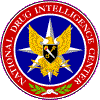
Michigan High Intensity Drug Trafficking Area Drug Market Analysis
June 2007
Drug Threat Overview
Cocaine, particularly crack cocaine, poses the most significant drug threat in the Michigan HIDTA region; the distribution and abuse of the drug have a profound impact on law enforcement and public health resources. Crack cocaine conversion typically occurs in urban areas of the HIDTA region. Crack cocaine abusers often commit crimes such as burglary, robbery, theft, and retail fraud to obtain the drug, while distributors commit assault and homicide to control their local drug markets and protect their trafficking operations. Methamphetamine production, previously a significant threat in western HIDTA counties, significantly declined during 2006, largely as a result of statewide legislation enacted in December 2005 restricting the sale of and access to products containing pseudoephedrine and ephedrine as well as directed law enforcement and public awareness campaigns. Accordingly, methamphetamine laboratory incidents in HIDTA counties decreased approximately 44 percent in 2006.
The trafficking and abuse of other drugs, such as heroin, marijuana, MDMA, and pharmaceuticals, pose persistent threats within the HIDTA region as well. The availability and abuse of heroin appear to be increasing in the Detroit and Flint areas, particularly among young Caucasian abusers. Heroin abuse among high school students in the Kalamazoo area also appears to be increasing. Law enforcement officials estimate that approximately 70 percent of heroin seized in the HIDTA region is South American (SA), 25 percent is Southwest Asian (SWA), and the remainder is Mexican and, to a very limited extent, Southeast Asian (SEA). Marijuana is readily available and widely abused; commercial-grade Mexican marijuana is the most prevalent type in the region, but high-potency Canadian and locally produced marijuana are also available. Canadian marijuana and MDMA transit the Detroit area destined for other U.S. drug markets; however, some is retained in the HIDTA region for local distribution and abuse. Diverted pharmaceuticals such as fentanyl, hydrocodone, methadone, OxyContin, Vicodin, and Xanax are also abused in the region. Fentanyl, clandestinely produced in Mexico and often mixed with and sold as heroin or cocaine, posed a serious drug threat in the Detroit area in late 2005 and in 2006.